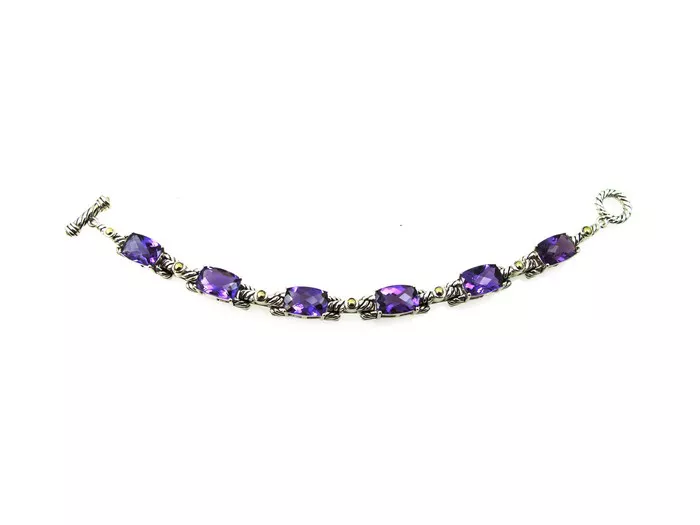In the realm of fashion and personal adornment, the choice of which wrist to wear a bracelet on may seem arbitrary to some, but for many, it carries deep significance rooted in cultural, historical, and spiritual beliefs. While the left and right hands both serve as canvases for self-expression, there is a prevailing notion that wearing bracelets on the left wrist holds particular benefits and symbolism. Exploring this tradition reveals a rich tapestry of historical, cultural, and personal significance.
Historical and Cultural Perspectives:
Left Hand Significance:
The left hand has long held special significance in various cultures and traditions around the world. In many societies, it is considered the hand of intuition, the hand closest to the heart, and therefore imbued with symbolism related to emotions, intuition, and spirituality. Ancient practices such as palmistry and hand symbolism often attribute unique qualities to the left hand, reinforcing its importance in cultural contexts.
Influence of Historical Figures:
Throughout history, influential figures and cultural icons have played a role in shaping societal norms and customs, including those related to fashion and accessory choices. From ancient rulers to modern-day celebrities, individuals in positions of power and influence have often dictated trends and preferences. Their penchant for wearing bracelets on a particular wrist can subtly influence mass behavior and perceptions.
Symbolism and Beliefs:
Good Luck and Protection:
One of the prevailing beliefs associated with wearing bracelets on the left wrist is its purported ability to attract good luck and provide protection. The left side of the body is often associated with receiving energy, making it a natural choice for items believed to offer blessings and safeguard against negative influences.
Fashion and Personal Style:
For many individuals, wearing bracelets on the left wrist is simply a matter of personal style and fashion preference. Whether it’s stacking multiple bracelets for a bohemian look or adorning the wrist with a single statement piece, the left wrist serves as a canvas for self-expression and sartorial experimentation.
Spiritual Significance:
In spiritual traditions and esoteric practices, the left side of the body is often regarded as the side that receives energy from the universe. As such, wearing bracelets on the left wrist is believed to facilitate the flow of positive energy, aid in healing processes, and enhance one’s spiritual connection.
Reminder and Goal Setting:
Protection and Strength:
For some individuals, wearing jewelry on the left wrist serves as a symbolic reminder of inner strength and resilience. It can act as a talisman of protection, imbuing the wearer with a sense of courage and fortitude in the face of challenges.
Luck and Success:
In certain cultures, there is a belief that wearing bracelets on the left wrist can attract luck and success in endeavors. Whether it’s pursuing career goals or seeking personal fulfillment, adorning the left wrist with jewelry is seen as a way to align oneself with auspicious energies.
Manifesting Positive Energy:
By wearing bracelets on the left wrist, individuals may seek to harness the power of intention and manifestation. The left side of the body is believed to be more receptive to energy, making it an ideal location for items intended to amplify positive vibrations and spiritual aspirations.
Personal Expression:
Values and Identity:
The choice between wearing bracelets on the left or right wrist can serve as a reflection of one’s values, beliefs, and personal identity. Whether consciously or subconsciously, individuals may align themselves with cultural norms or spiritual practices that resonate with their sense of self.
Hope and Faith:
In times of uncertainty or adversity, wearing a bracelet on the left wrist can symbolize hope and faith in oneself and higher powers. It serves as a tangible reminder of resilience and optimism, anchoring the wearer in moments of doubt or difficulty.
In conclusion, the decision to wear bracelets on the left wrist encompasses a myriad of factors, ranging from cultural traditions and spiritual beliefs to personal style and self-expression. Whether seeking protection, luck, or simply a touch of aesthetic flair, the left wrist holds a special place in the realm of accessory adornment. Ultimately, the significance attributed to this practice is as diverse and multifaceted as the individuals who choose to embrace it.
FAQs
Where do you wear a good luck bracelet?
A good luck bracelet is typically worn on the left wrist. In many cultures and traditions, it is believed that the left side of the body is receptive and represents the receiving side, thus making it ideal for attracting positive energy and good luck. By wearing the bracelet on the left wrist, you invite good fortune and protection into your life.
What does a bracelet on the right wrist mean?
Wearing a bracelet on the right wrist can have different meanings depending on cultural beliefs and personal preferences. In some traditions, the right side of the body is associated with giving and taking action. Therefore, wearing a bracelet on the right wrist may symbolize your proactive approach to manifesting your intentions or protecting yourself from negative energies.
How many bracelets should a woman wear?
There is no set rule for the number of bracelets a woman should wear. It ultimately depends on personal style, comfort, and the occasion. Some women prefer to wear a single statement bracelet for simplicity, while others enjoy layering multiple bracelets for a more eclectic look. Experiment with different combinations to find what suits your taste and enhances your outfit.
Can you wear a bracelet every day?
Yes, you can wear a bracelet every day if you choose to. Many people wear bracelets as part of their daily accessories, incorporating them into their personal style. However, it’s essential to consider the materials and design of the bracelet to ensure durability and comfort for daily wear. Opt for high-quality materials and adjustable designs that can withstand regular use without causing irritation or discomfort.

